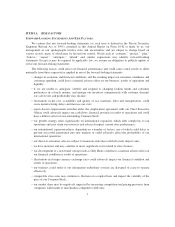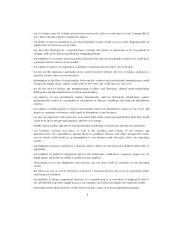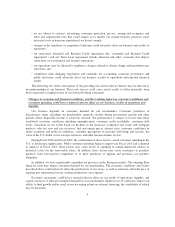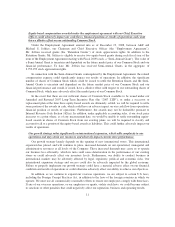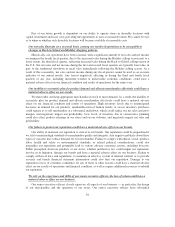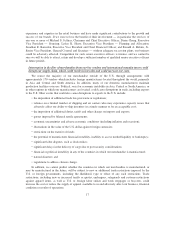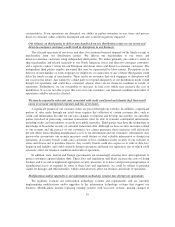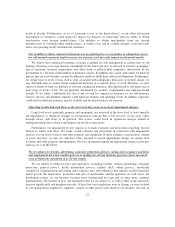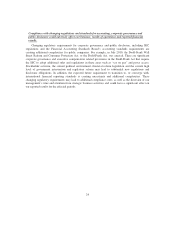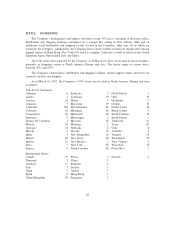Abercrombie & Fitch 2011 Annual Report Download - page 20
Download and view the complete annual report
Please find page 20 of the 2011 Abercrombie & Fitch annual report below. You can navigate through the pages in the report by either clicking on the pages listed below, or by using the keyword search tool below to find specific information within the annual report.
experience and expertise in the retail business and have made significant contributions to the growth and
success of our brands. If we were to lose the benefit of their involvement — in particular the services of
any one or more of Michael S. Jeffries, Chairman and Chief Executive Officer; Diane Chang, Executive
Vice President — Sourcing; Leslee K. Herro, Executive Vice President — Planning and Allocation;
Jonathan E. Ramsden, Executive Vice President and Chief Financial Officer; and Ronald A. Robins, Jr.,
Senior Vice President, General Counsel and Secretary — without adequate succession plans, our business
could be adversely affected. Competition for such senior executive officers is intense, and we cannot be
sure we will be able to attract, retain and develop a sufficient number of qualified senior executive officers
in future periods.
Interruption in the flow of merchandise from our key vendors and international manufacturers could
disrupt our supply chain, which could result in lost sales and could increase our costs.
We source the majority of our merchandise outside of the U.S. through arrangements with
approximately 170 vendors which includes foreign manufacturers located throughout the world, primarily
in Asia and Central and South America. In addition, many of our domestic manufacturers maintain
production facilities overseas. Political, social or economic instability in Asia, Central or South America, or
in other regions in which our manufacturers are located, could cause disruptions in trade, including exports
to the U.S. Other events that could also cause disruptions to exports to the U.S. include:
• the imposition of additional trade law provisions or regulations;
• reliance on a limited number of shipping and air carriers who may experience capacity issues that
adversely affect our ability to ship inventory in a timely manner or for an acceptable cost;
• the imposition of additional duties, tariffs and other charges on imports and exports;
• quotas imposed by bilateral textile agreements;
• economic uncertainties and adverse economic conditions (including inflation and recession);
• fluctuations in the value of the U.S. dollar against foreign currencies;
• restrictions on the transfer of funds;
• the potential of manufacturer financial instability, inability to access needed liquidity or bankruptcy;
• significant labor disputes, such as dock strikes;
• significant delays in the delivery of cargo due to port security considerations;
• financial or political instability in any of the countries in which our merchandise is manufactured;
• natural disasters; and
• regulations to address climate change.
In addition, we cannot predict whether the countries in which our merchandise is manufactured, or
may be manufactured in the future, will be subject to new or additional trade restrictions imposed by the
U.S. or foreign governments, including the likelihood, type or effect of any such restrictions. Trade
restrictions, including new or increased tariffs or quotas, embargoes, safeguards and customs restrictions
against apparel items, as well as U.S. or foreign labor strikes and work stoppages or boycotts, could
increase the cost or reduce the supply of apparel available to us and adversely affect our business, financial
condition or results of operations.
17


